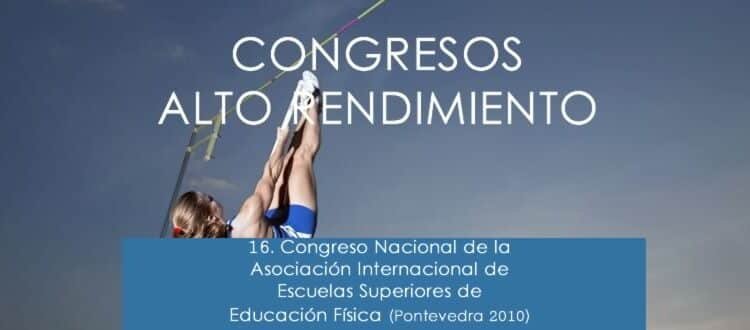Knowing your pupils: reflections on supervised early field experiences
Knowing your pupils: reflections on supervised early field experiences
INTRODUCTION
It is important that physical education teachers have some knowledge of their pupils’ interests, abilities, emotions and learning styles in order to allow for the adaptation of instruction to meet pupil needs. One reason for the difficulties faced by novice teachers in integrating knowledge about pupils into decision making processes is the limited nature of such knowledge. It is well established in research that teaching experience and the development of pedagogical content knowledge increase a teacher’s ability to support pupil learning. (Griffey & Housner 1999; Hall & Smith 2006; McCaughtry & Rovegno 2003; Reynolds 1992; Woods, Goc Karp & Escamilla 2000)
METHODS
The purpose of this study was to examine what second-year physical education pre-service teachers learned about their pupils during supervised early field experiences. The pre-service teachers practiced once a week with the same elementary school class. This field experience lasted for 13 weeks. During this time, each preservice teacher acted as an observer, as an assistant teacher and as the teacher in charge. After each lesson the observation tasks and other experiences were analyzed through reflective discussions. The data of this study consisted of pre-service teachers’ (n=16) reflective journals, which were analyzed using qualitative content analysis (Tuomi & Sarajärvi 2002). The gender distribution was 8 female and 8 male preservice teachers.
RESULTS
Weekly contact with the same class provided the pre-service teachers with a good opportunity to develop their knowledge and understanding of the pupils and improve the teacher-pupil interaction. The thoughts and perceptions of the pre-service teachers about their pupils were quite varied. Most of the comments in the journals referred to the pupils’ level of enthusiasm, motivation, involvement, physical activity and effort during the physical education classes. The pre-service teachers also frequently commented on the characteristics of individual pupils, focusing particularly on their skill level and their interaction with peers and the pre-service teachers.
In their reflective journals the pre-service teachers made specific comments related to pupils, instructions, and their own teaching behaviour, but they also found connections related to 1) the teacher-pupil relationship and teaching 2) the interaction between management or class atmosphere and teaching, 3) the role of pupil diversity and teaching, and 4) pupil interest and curriculum selection (Table 1). These results were consistent with Woods, Carp and & Escamilla (2000), who found that, through early field experience, pre-service teachers begin to make connections between knowledge of students and its implications for teaching.
Table 1 Pre-service teachers’ learning experiences grouped in teaching knowledge themes
Table 1. Knowing your pupils: reflections on supervised early field experiences
The supervised early field experience helped the pre-service teachers to fully understand the meaning of having a good knowledge and understanding of the pupils. Many pupil-centred thoughts were recorded in their journals and during the field experience those reflections evolved to include interaction with teaching, and pupil behaviour and needs.
The pre-service teachers began to utilize their observations in planning and in their decision making during the lessons. While planning the lessons, more consideration was put into determining the sources of motivation in the precise group of pupils, the level of readiness they had for the current subject and the kind of activities which would offer the pupils adequate challenge and success. As the activities progressed, the diversity of pupils became a central theme. It was understood that all pupils should have the opportunity to participate and experience success in physical education. Decision making during teaching became increasingly subject to adaptation and the pre-service teachers ventured to give more room for pupils’ wishes and needs during the lesson.
“I noticed that a teacher will get far by showing a caring and interested attitude. In future, I want to hurl myself into the group of pupils and show them their importance as individuals. Knowledge of pupils and the ability to approach pupils are without a doubt two of the most important qualities of a teacher. That way it is possible to grasp the individual strengths of pupils, encourage them to learn new things and to adopt a physically active lifestyle.” (Pre-service teacher w1, reflective journal)
DISCUSSION
Pre-service teachers need ample opportunities to teach pupils in order to develop their pedagogical content knowledge and become more pupil-centred in their decision making. They need to be encouraged to react to the learner’s response and change the planned tasks as needed (Hall & Smith 2006). A continuing concern for teacher educators is how to improve the effectiveness of field experiences and student teaching. Central challenges include giving appropriate tasks and feedback at all phases of students’ individual professional development, bridging the gap between theory and practice, encouraging pre-service teachers to adopt a “teacher as researcher” perspective and promoting pupil-centred teaching.
REFERENCIAS
Griffey, C.D. & Housner, L.D. (1999). Teacher thinking and decision making in physical education. In C.A.
Hardy & M. Mawer (eds.) Learning and teaching in physical education. London: Falmer Press, 203-214.
Hall, T.J. & Smith, M.A. (2006). Teacher planning, instruction and reflection: What we know about teacher cognitive processes. Quest, 58, 424-442.
McCaughtry, N. & Rovegno, I. (2003). Development of pedagogical content knowledge: moving from blaming students to predicting skillfulness, recognizing motor development and understanding emotion. Journal of Teaching in Physical Education, 22, 355-368.
Reynolds, A. (1992). What is competent beginning teaching? A review of the literature. Review of Educational Research, 62, 1-35.
Tuomi, J. & Sarajärvi, A. (2002). Laadullinen tutkimus ja sisällön analyysi. Helsinki: Tammi. [Qualitative research and content analysis]
Woods, M., Goc Karp, G. & Escamilla, E. (2000). Pre-service teachers learning about students and teachinglearning process. Journal of Teaching in Physical Education, 20, 15-39.






